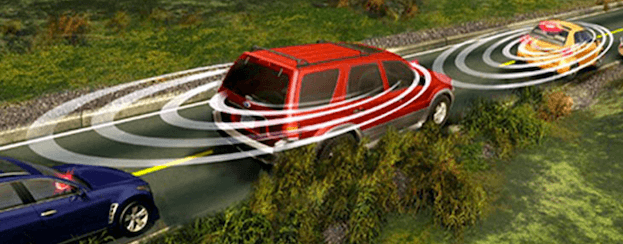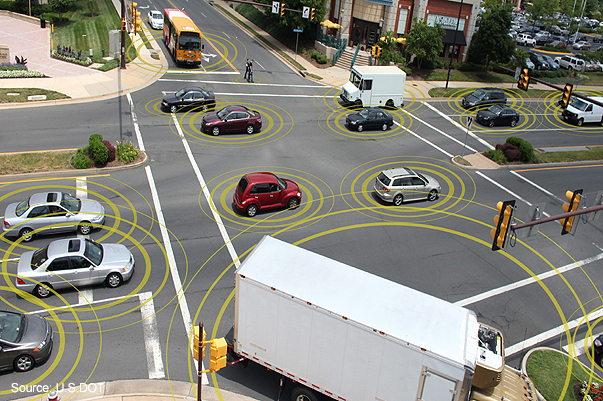Allowing cars to ‘talk’ to each other will mean safer roads
Vehicle-to-vehicle (V2V) communication technology for light vehicles is soon to become a reality, the National Highway Traffic Safety Administration (NHTSA) said this week. The goal is to improve road safety by allowing vehicles to “talk” to each other to avoid crashes by exchanging basic safety data, such as speed and location, 10 times every second.
The agency, a branch of the U.S. Department of Transportation (DOT), said its research shows that safety applications using V2V technology can lessen a large majority of crashes involving two or more vehicles such as rear-end, lane change, and intersection crashes. There were 5.4 million crashes on U.S. roads in 2010, resulting in 2.2 million injuries and 32,885 deaths.
The DOT said its announcement is a signal to the marketplace that will “significantly enhance development of this technology and pave the way for market penetration of V2V safety applications.”
“Vehicle-to-vehicle technology represents the next generation of auto safety improvements, building on the life-saving achievements we’ve already seen with safety belts and airbags,” said Transportation Secretary Anthony Foxx.
The technology can detect threats hundreds of yards from other vehicles that cannot be seen, often in situations in which on-board sensors alone cannot detect the threat. V2V communications give both the vehicle and driver 360-degree situational awareness to address crash situations such as when a driver needs to decide if it is safe to pass on a two-lane road (potential head-on collision), make a left turn across the path of oncoming traffic, or in which a vehicle approaching at an intersection appears to be on a collision course.
The safety applications currently being developed provide warnings to drivers in order to prevent imminent collisions but don’t actually operate any vehicle systems, such as braking or steering. NHTSA said it is considering incorporating “active safety technologies” that rely on sensors in the vehicle with the V2V technology, which could help conserve fuel and save time.
The federal agency said while V2V technology does not track a vehicle movements or involve exchanging or recording personal information or vehicle identification, a vehicle or group of vehicles could be identifiable through “defined procedures if there is a need to fix a safety problem.” The envisioned system would contain “several layers” of security and privacy protection to ensure that vehicles can rely on messages sent from other vehicles using wireless technology.
“V2V crash avoidance technology has game-changing potential to significantly reduce the number of crashes, injuries and deaths on our nation’s roads,” said NHTSA Acting Administrator David Friedman. “Decades from now, it’s likely we’ll look back at this time period as one in which the historical arc of transportation safety considerably changed for the better, similar to the introduction of standards for seat belts, airbags, and electronic stability control technology.”
The NHTSA launched a V2V pilot program in 2012, dispatching nearly 3,000 vehicles to test the technology. The agency said it will soon publish a report on V2V for public comment that will include analysis of its pilot findings, including technical feasibility, privacy and security, and preliminary estimates on costs and safety benefits.
NHTSA will then begin working on a regulatory proposal to require V2V devices in new vehicles “in a future year.”






